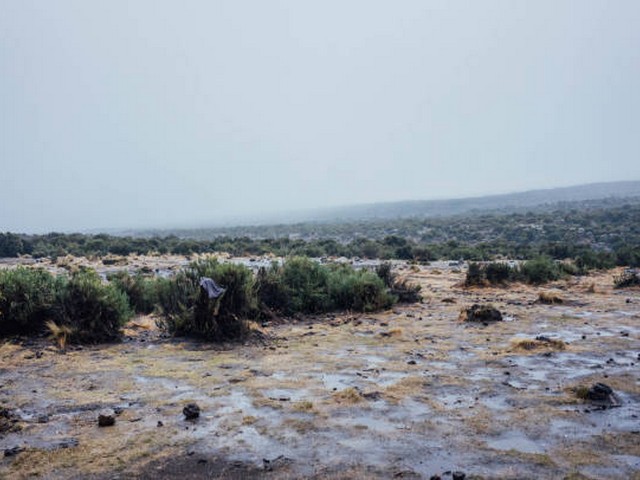Conquering Kilimanjaro: Understanding Trekking Weight Limits
Embarking on a journey to the roof of Africa is an awe-inspiring experience that promises not only breathtaking views but also a sense of unparalleled accomplishment. At Kilimanjaro Centre for Trekking and Ecotourism (KCTE), we understand that preparation is key to enjoying and succeeding in your Kilimanjaro trek. One crucial aspect often overlooked by many climbers is the importance of understanding and adhering to weight limits for Kilimanjaro trekking. In this detailed guide, we will walk you through everything you need to know about managing your load, ensuring a safe and enjoyable climb.
Why Weight Limits Are Crucial on Kilimanjaro
Safety First
Trekking Kilimanjaro is not your average hike; it involves several days of walking at high altitude, where oxygen levels are significantly lower. Carrying too much weight can quickly lead to exhaustion and altitude sickness, which are among the leading reasons climbers fail to reach the summit. Adhering to weight limits is essential for your safety and well-being.
Environmental Considerations
Kilimanjaro is not only a popular trekking destination but also a fragile ecosystem. Limiting the weight of what we bring onto the mountain helps reduce the environmental impact and preserves its beauty for future generations.
Understanding the Kilimanjaro Trekking Weight Limit
What’s the Limit?
The Kilimanjaro National Park Authority imposes a strict weight limit of 20 kilograms (44 pounds) per porter. This regulation ensures the well-being of the porters who play a crucial role in the success of your climb. But remember, this weight includes their own gear as well as yours.
Packing Smart
At KCTE, we recommend that your personal gear should not exceed 15 kilograms (33 pounds). This weight is typically sufficient to cover all necessary clothing, sleeping gear, and personal items while allowing room for communal equipment and supplies to be evenly distributed among the porters.
Tips for Packing Effectively
Essential Gear Only
Focus on the absolute necessities. Opt for lightweight and multipurpose gear. For example, choose a water-resistant down jacket that can serve both as insulation and a pillow.
Layer, Don’t Bulk Up
Layering is key in managing varying temperatures. Instead of packing big, bulky items, use several thinner layers that can be easily adjusted.
Rent Equipment Locally
To save on weight, consider renting heavier items like sleeping bags and trekking poles directly from KCTE once you arrive. Not only does this support local businesses, but it also reduces the weight of your luggage.
How KCTE Helps You Manage Weight Limits
Pre-Trek Briefing
Upon arrival, our team provides a comprehensive briefing, including a detailed check of your gear. This ensures that everything you bring is necessary and within weight limits.
Professional Packing Assistance
Our experienced guides and porters can help optimize your pack. This service ensures comfort for you and the porters who will be carrying the equipment.
Gear Rental Services
We offer high-quality gear for rent, ensuring you have the necessary equipment without the hassle and weight of bringing it from home.
Frequently Asked Questions
Q1: What should I do if my personal items exceed the recommended weight?
A1: Try to pare down to essentials only. If you’re struggling, KCTE staff can help you prioritize items during the pre-trek briefing.
Q2: Can I bring my own food for the trek?
A2: It’s not necessary. KCTE provides balanced, energy-boosting meals throughout the climb. Bringing additional food might unnecessarily increase your load.
Q3: What happens if the total weight exceeds the limit on the day of the trek?
A3: You might need to leave some items behind. Our team will help you adjust your pack to adhere to the limits, ensuring safety for everyone on the climb.
Q4: Are there any items that I should not bring on the trek?
A4: Avoid non-essential electronics, bulky books, and excess clothing. Focus on bringing items that are essential for your health, safety, and comfort during the climb.
Ready to Embark on Your Kilimanjaro Adventure?
Adhering to weight limits when planning your Kilimanjaro trek might seem challenging, but it’s a vital part of ensuring a successful summit attempt. At Kilimanjaro Centre for Trekking and Ecotourism (KCTE), we are dedicated to helping you prepare adequately and provide all the support you need on your journey to the top.
Are you ready to conquer Kilimanjaro with the perfect balance of adventure and responsibility? Book your climb with Kilimanjaro Centre For Trekking and Ecotourism (KCTE) today and experience the thrill of reaching the summit with the experts in adventure and sustainable trekking.
Embrace the challenge, respect the mountain, and create memories that will last a lifetime. Let’s climb Kilimanjaro together!




